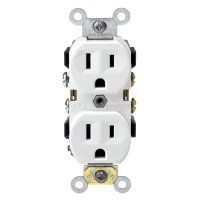Danny Daniels
New Member
I intend to replace four two-slot receptacles in the kitchen with GFCI protected three-slot receptacles in order to meet minimal code requirements for kitchen counter outlets. The old receptacles being replaced are enclosed inside metal junction boxes with copper ground wire attached via screw at the back of each box.
Due to the fact that the metal junction boxes are grounded, and since I will be using the original wiring to make connections, will this have any impact, either negative or positive, when I replace the old receptacles with three-slot receptacles? The new receptacles will be protected by the GFCI that will be installed at the beginning of the circuit. My thinking is that since the metal boxes are grounded it should be a plus; and the new receptacles will offer added personal protection via the GFCI (even though there will be no equipment ground).
Or is there some other aspect of "grounding" that I need to take into consideration for this project? Tks.
Due to the fact that the metal junction boxes are grounded, and since I will be using the original wiring to make connections, will this have any impact, either negative or positive, when I replace the old receptacles with three-slot receptacles? The new receptacles will be protected by the GFCI that will be installed at the beginning of the circuit. My thinking is that since the metal boxes are grounded it should be a plus; and the new receptacles will offer added personal protection via the GFCI (even though there will be no equipment ground).
Or is there some other aspect of "grounding" that I need to take into consideration for this project? Tks.

